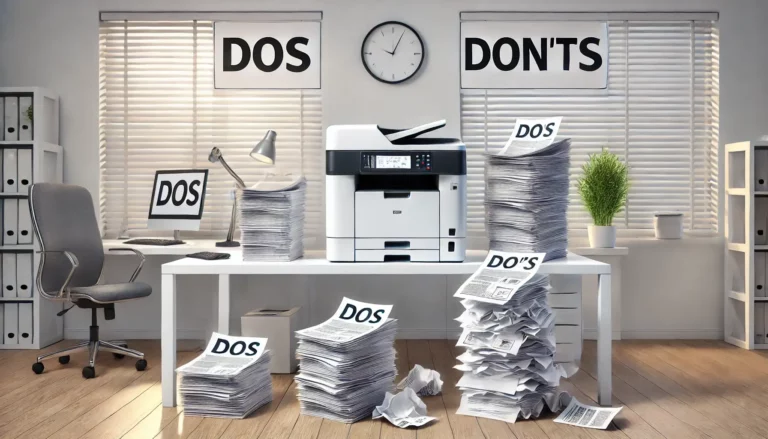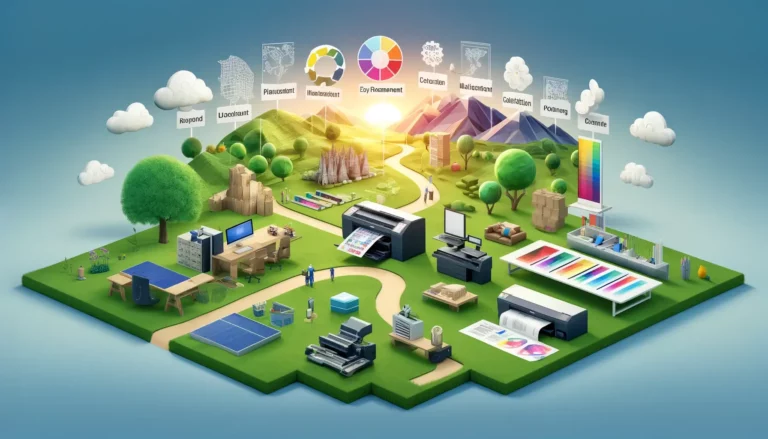You’ll come across a range of terms when you’re buying ink and toner cartridges for your printer. This can make it harder to choose the right cartridge for you. After all, if you don’t know the difference between an OEM and a refilled cartridge, how can you decide which one suits your needs.
This article explains the different types of cartridges, alongside the benefits and drawbacks associated with each. It also answers a few questions that you may have that relate to how using different cartridges may affect your printer.
OEM Cartridges
OEM stands for Original Equipment Manufacturer. As the name implies, OEM cartridges come directly from the company that built your printer. Some refer to them as official or genuine cartridges.
For example, let’s say that you have a Lexmark printer. An ink cartridge that carries the Lexmark branding is an OEM cartridge. Of course, you have to ensure the cartridge fits your printer. Companies produce a range of OEM cartridges to suit the various makes and models of printers they build. If you buy one without checking which you cartridge actually works in your printer, you may end up with a cartridge that you can’t use.
Pros
- Cartridges that come from the original manufacturer tend to be more reliable.
- Made specifically for your printer by the people who made the printer.
- Tend to offer high quality in terms of ink or toner.
- Often come with guarantees.
Cons
- The most expensive type of cartridge available.
Compatible Cartridges
Compatible is a difficult term to nail down when it comes to ink cartridges. All of the cartridges we’re discussing here are technical compatible with your printer, assuming you select the right make and model.
However, in this context, compatible refers to any cartridge that works in your printer but isn’t made by the same manufacturer as the printer. Typically, this means they’re made by independent third-parties. Importantly, these cartridges are still brand new.
Generally speaking, you won’t find that an OEM cartridge for one brand of printer is compatible with another brand of printer. However, compatible cartridges can often cross brands, assuming they’re the right shape and size for your printer.
Think of them like the generic supermarket brand. They usually work just as well, but they are a few differences between compatible and OEM cartridges.
Pros
- Compatible cartridges from reputable companies often provide high print quality.
- Many compatible cartridges offer a higher page yield than their OEM equivalents.
- They often cost less than their OEM equivalents.
- Designed to work for a wide range of printers, rather than just one brand.
Cons
- Buying from a poor supplier could lead to low print quality.
- They don’t always come with guarantees.
Remanufactured Cartridges
Also referred to as recycled cartridges, these are cartridges that a manufacturer has taken back from a user. The manufacturer then cleans the cartridge and replaces all of its working parts before refilling it.
It’s a process that usually takes place with toners. However, some manufacturers remanufacture ink cartridges as well. But in the case of toners, the remanufacturing process replaces the parts that experience wear and tear through printing. This makes remanufacturing more desirable than refilling for many people.
There are no restrictions on who can remanufacture cartridges. Both OEMs and third parties can and do offer remanufactured cartridges. You’ll also find that many OEMs operate recycling programs that allow you to drop used cartridges off at special locations so they can be remanufactured.
Pros
- More environmentally-friendly to produce than brand new cartridges.
- The parts replacement process proves beneficial for cartridges that have undergone a lot of wear and tear.
- Should produce similar results to brand new OEM and compatible cartridges.
- Cost less than brand new cartridges.
Cons
- Some manufacturers label refilled cartridges as refurbished. This means you’re paying for a refurb but the manufacturer hasn’t actually replaced any parts.
Refilled Cartridges
Refilled cartridges take one of two forms.
Firstly, some manufacturers carry out refilling for you. It’s important to note that this isn’t the same as refurbishing. Instead, the manufacturer will refill the cartridge with ink, without replacing any of the other working parts.
Alternatively, you can refill your own cartridges. There are several home refilling kits that provide you with the tools you need for the job. Typically, it involves punching a couple of holes into the cartridge and using a pipette to squirt ink into the cartridge.
Refilling kits cost much less than a brand new ink cartridge. However, they do require a certain level of expertise to complete the refilling job properly. If you’re clumsy, you could end up damaging other parts of the cartridge, which makes it less able to produce quality prints.
Pros
- Much cheaper than brand new cartridges.
- A very environmentally-friendly option.
- Refilling kits work with most types of cartridge.
Cons
- Refilling without refurbishing means that the moving parts of the cartridge undergo more wear and tear. This eventually affects the quality of your printouts.
- Home refilling kits can be slightly fiddly to use if you’re inexperienced.
Why Do New OEM Cartridges Cost So Much?
When a manufacturer develops a new printer, it also has to develop cartridges that work with that printer. This often requires a great deal of research, which creates overheads. OEM cartridges cost more than other types of cartridge because the manufacturer has to recoup some of these overheads.
This isn’t a problem that affects those who refill, refurbish, or create compatible cartridges. Thus, they can charge lower prices.
Do Non-OEM Cartridges Affect My Printer’s Warranty?
There’s some confusion around whether using a compatible or refilled ink cartridge will void your printer’s warranty.
All electronics manufacturers have to offer a 12-month guarantee for their products. These warranties cannot contain any anti-competitive terms or conditions. As a result, if your printer stops working during the first year, your warranty should still be valid even if you’re using a non-OEM cartridge.
Things get a little murkier past the 12-month stage. Warranties provided during this period tend to come directly from the manufacturer. This means that they can insert conditions that void the warranty if your printer gets damaged as a result of using a compatible or refilled non-OEM cartridge.
There are some ways around this though. For one, reputable third-party cartridge suppliers should provide guarantees for their products. If you can prove the cartridge is the reason for your printer malfunctioning, you may be able to get it repaired by the supplier.
Moreover, it’s possible that the fault in your printer isn’t the result of using a non-OEM cartridge. In those cases, the warranty should still be valid.
Should I Buy New or Used Cartridges?
At first, you won’t notice a huge difference in quality between new and refilled cartridges. However, the moving parts in refilled cartridges do degrade with repeated use. If you use the same cartridge three or four times, expect the print quality to degrade in line with the components.
However, you can avoid this if you use refilled cartridges that also undergo refurbishment. In these cases, the refilled cartridge should perform as well as a brand new one. Of course, this assumes that you purchase the cartridge from a reputable manufacturer and supplier.
That’s where we can help you. Our catalog contains a range of cartridges for all makes and models of printers. From OEM to refurbished cartridges, we have what you need.


